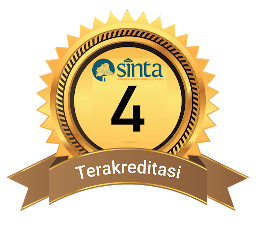Development of Acid Base Solution Teaching Module Integrated Ethnochemistry Based on Augmented Reality
DOI:
10.29303/cep.v7i1.6083Published:
2024-05-31Issue:
Vol. 7 No. 1 (2024): Edisi Mei 2024Articles
Downloads
How to Cite
Abstract
The aim of this research is to develop an integrated ethnochemical acid-base solution teaching module based on augmented reality (AR) that is valid, practical and effective. The development model uses 4D design (Define, Design, Develop, Disseminate). The module that has been developed will be validated by two validators. Apart from that, effectiveness tests were also carried out through limited trials. Data collection using validation questionnaires and practicality questionnaires. Data analysis using the IBM SPSS Statistics 22 application. validation by experts and limited testing on 20 students obtained an Aiken's V value of 0.9 and an average practicality of 86%. This shows that the augmented reality (AR)-based integrated acid-base ethnochemistry teaching module that has been developed is very valid, very practical and effective for use in chemistry learning
Author Biographies
Sunniarti Ariani, Program Studi Pendidikan Kimia, Universitas Mataram. Mataram, Indonesia
Ermia Hidayanti, Program Studi Pendidikan Kimia, Universitas Mataram. Mataram, Indonesia
Sya’ban Putra Adiguna, Program Studi Kimia Fakultas MIPA, Universitas Mataram, Mataram
Supriadi Supriadi, Pendidikan Kimia, Universitas Mataram
License
Copyright (c) 2024 Sunniarti Ariani, Ermia Hidayanti, Sya’ban Putra Adiguna, Supriadi Supriadi

This work is licensed under a Creative Commons Attribution-ShareAlike 4.0 International License.
Authors who publish with Chemistry Education Practice agree to the following terms:
- Authors retain copyright and grant the journal right of first publication with the work simultaneously licensed under a Creative Commons Attribution License 4.0 International License (CC-BY-SA License). This license allows authors to use all articles, data sets, graphics, and appendices in data mining applications, search engines, web sites, blogs, and other platforms by providing an appropriate reference. The journal allows the author(s) to hold the copyright without restrictions and will retain publishing rights without restrictions.
- Authors are able to enter into separate, additional contractual arrangements for the non-exclusive distribution of the journal's published version of the work (e.g., post it to an institutional repository or publish it in a book), with an acknowledgement of its initial publication in Chemistry Education Practice.
- Authors are permitted and encouraged to post their work online (e.g., in institutional repositories or on their website) prior to and during the submission process, as it can lead to productive exchanges, as well as earlier and greater citation of published work (See The Effect of Open Access).






